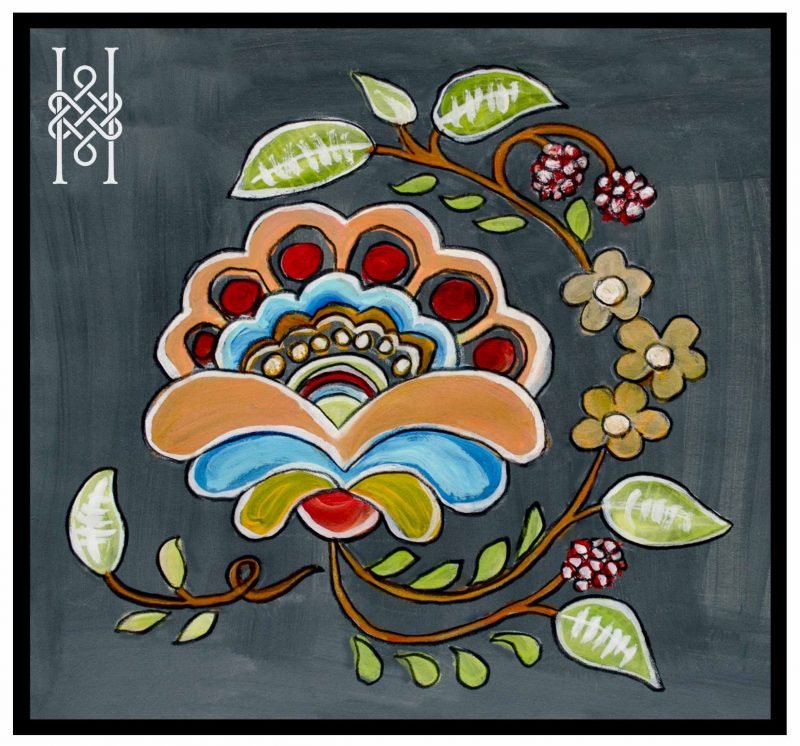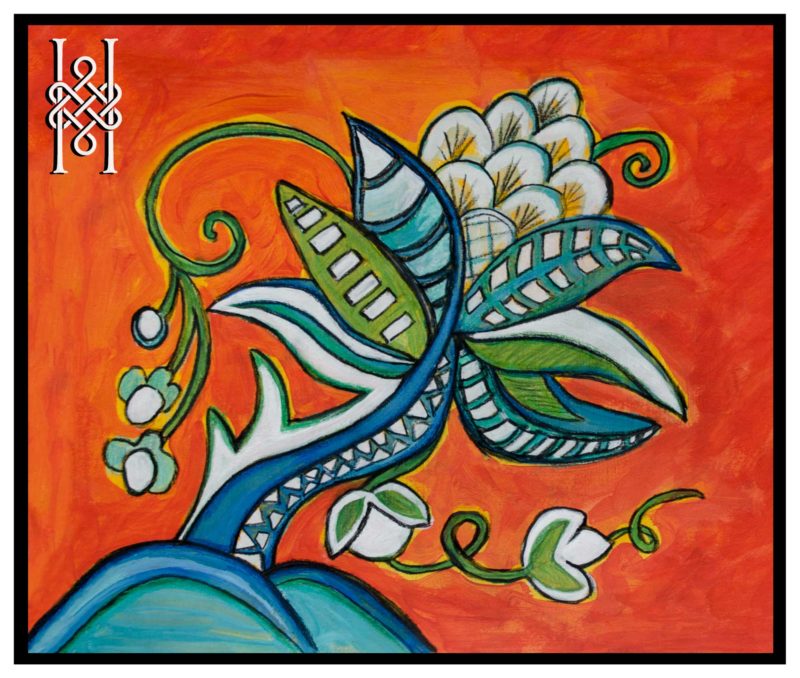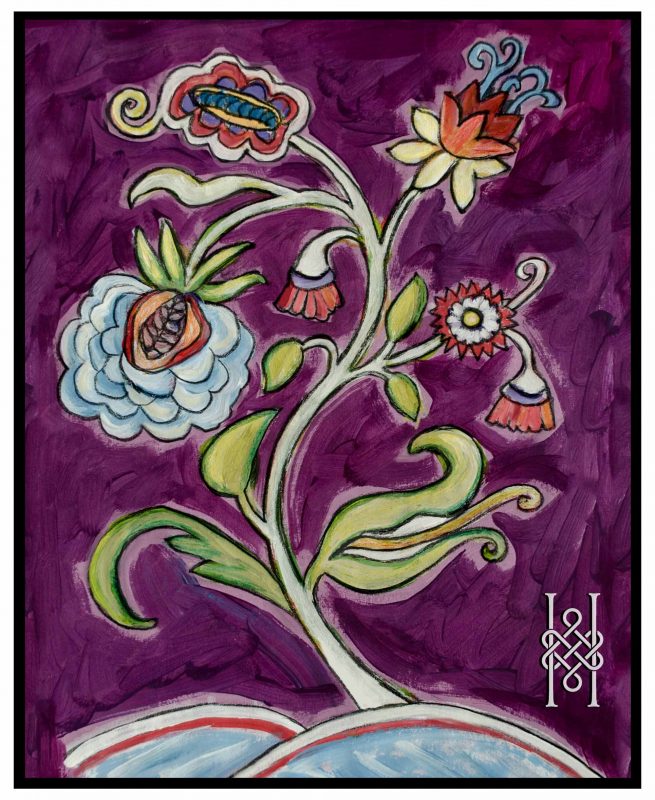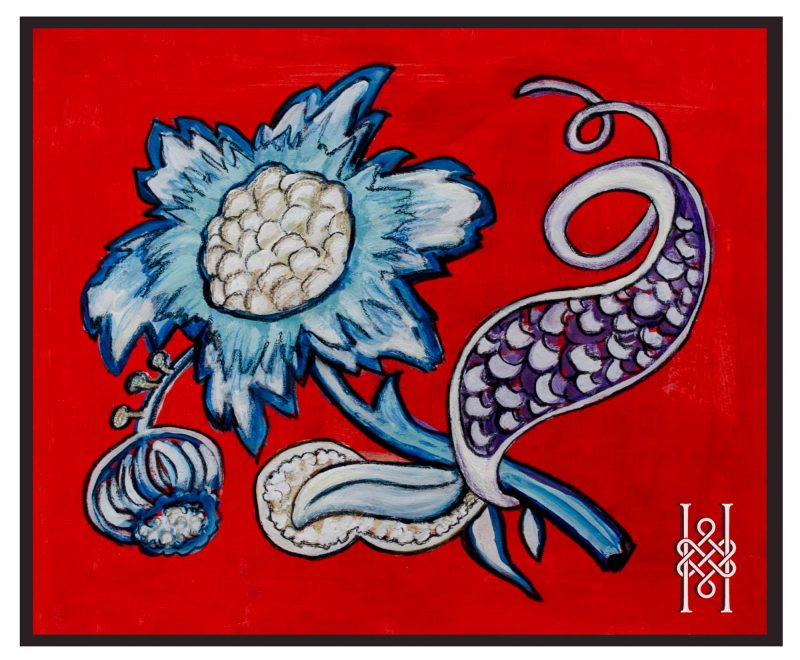How did it Happen?

Jacobean style flower
Flowers in art are not new. People that care about plants and nature grow flowers. It is such a simple thing. It keeps ecosystems alive and brings birds, bees, and other critters into the continuing cycle of life. Beautiful Jacobean Crewel embroidery designs displaying flora and fauna from the garden have inspired me to think again about flowers in art.
Where did it come from?

Jacobean Orange Tree
For centuries in the East and West: notably China, India, England, and France, decorative floral motifs have been embroidered and stitched onto fabrics. The flamboyant and imaginative floral motifs in the sixteenth and seventeenth century were often derived from oriental printed cottons. Roses, carnations, marigolds, honeysuckles, irises, apple blossoms, daisies, forget-me-not’s and more from the English cottage garden have often been celebrated.
The Fantasy of the Tree of Life

Tree of Life- Audrey Francini design
Most inspiring is the era of the Jacobean Tree of Life in England. The legend and idea of Paradise and the Garden of Eden triggered ideas and the imagination. The Tree of Life and Crewel embroidery became popular. In the Middle Ages it was thought that Paradise was located somewhere in a faraway place beyond India, a place with exotic flowers in abundance. From the idea of paradise and exotic flowers, ferns, vines, twirling tendrils, and the apple tree from the garden of Eden, designs and patterns were born and multiplied. Birds, insects, and small animals appeared, and dream gardens became a sewing reality with a needle and thread. The Tree of Life evolved. One plant with a central stem could exhibit a variety of flowers, buds, leaves and beautiful line patterns on the leaves. Semi-circular mounds at the base represented the earth and this idea stuck.
Flowers in Art and the Home
William Morris from the Pre-Raphaelite painting movement developed the Crewel embroidery designs even further in the late seventeenth century. He admired the flowing curvilinear line and the subdued colours. Morris was a painter turned interior designer, and he changed the face of English home design for centuries to come. At the Great Exhibition, 1851 in London, Morris for the first time saw examples of Crewel embroidery work. The best of the design arts from around the world were showcased at this Exhibition. It changed his life. Plant style wallpapers and home furnishings were developed and reworked in a new way and the company of Morris & Co. became remarkably successful. The Crewel embroidery Jacobean Tree of Life had impact and still does.
Blue Poppy design
From Embroidery to Painting
I have completed a Tree of Life embroidery as a young girl and the idea has stayed with me. These days I work with paint and have completed some designs to share. However, I prefer to stand back and admire the real thing on fabric. The patterns here, are from the little Anchor books. The textile quality of the stitches and wool is lost with flat paint and drawing of course. It is even worse on screen, no sensual quality at all. It is a cross-over medium and not the same. What matters is that the love of nature in art continues to be appreciated. Flowers in art in the textile arts are the most inspiring and the embroidered Tree of Life is still magical and wonderful.

